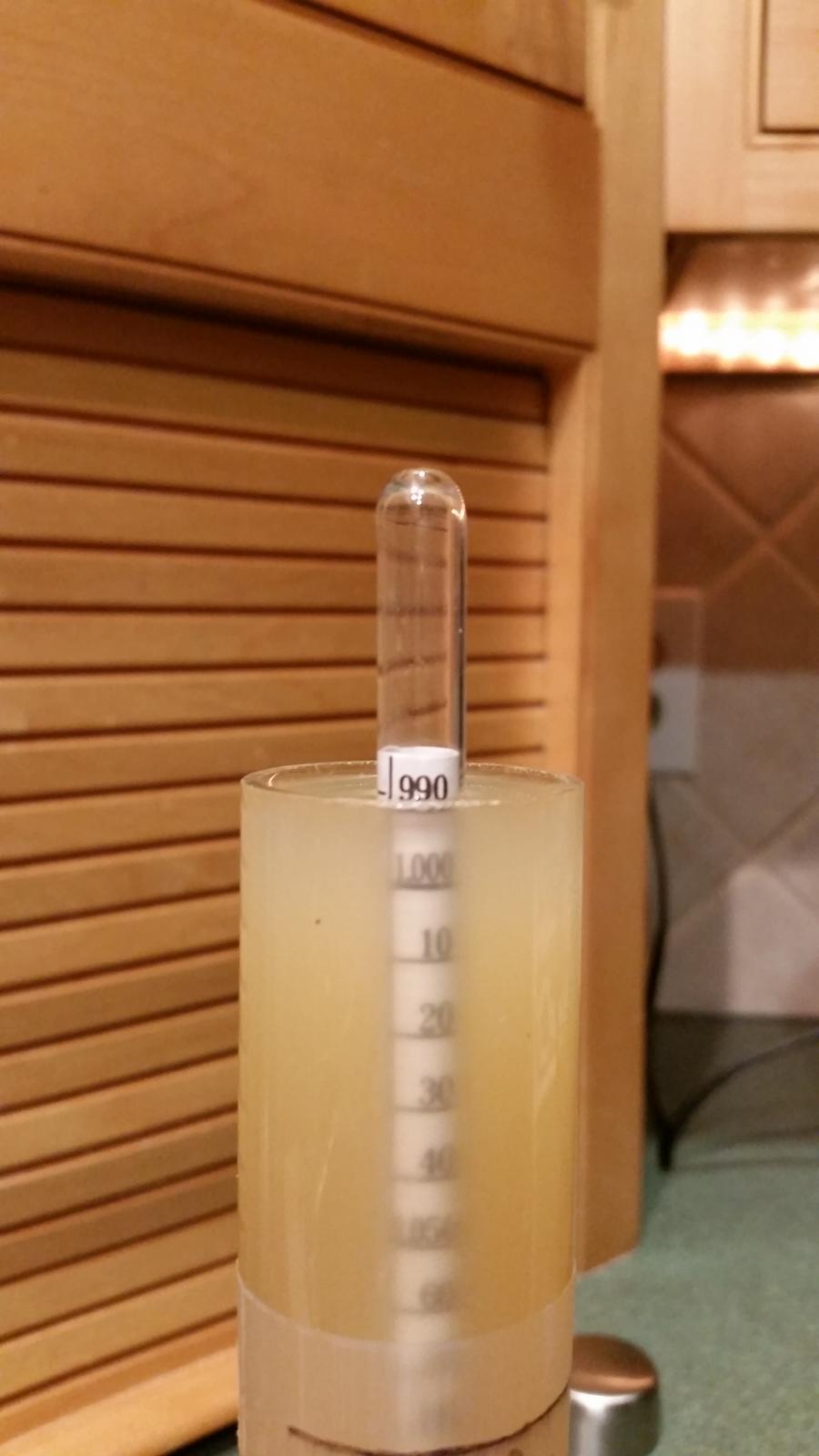...and I have no idea what I'm doing. If (when) I use incorrect terminology, laugh to yourself and feel free to correct me; otherwise I'll just keep on sounding like an idiot and nobody wants to deal with that.
I decided I was going to make mead a few months ago because reasons. I live in a small town in Pennsylvania so I decided to go as local as I could; apples from a farmer's market, semi-local honey (same state, at least) and PA spring water (alright, Deer Park, but all the springs listed on the jug were in this state).
I'm using my dad's old Ale Pail kit for a five gallon batch, and I'm following Brad Smith's post on a home brewing blog site for instruction.
So, five gallons of water (give or take), 12 pounds of Dutch Gold Orange Blossom honey, and maybe 15 apples that my dad and I pretty much shredded (by accident; we used some appliance of my mom's that neither of us knew would absolutely demolish anything we put in), and for yeast I bought two packets of Mangrove Jack's Cider yeast. I know, it's not wine yeast, but like I said, I'm a newbie and I'll be damned if I follow instructions to the letter.
I started October 4th using Smith's idea to split the yeast into four equal parts, pitched the second bit on the 6th and the third on the 7th.
Smith advises to add the final portion "after roughly 2/3 of the sugar has been depleted, i.e. the original gravity has dropped by 2/3 of your target."
And that's where I'm stuck. I stopped seeing the airlock bubble around the beginning of November, so I decided to take a reading. I place my hydrometer in its jar after I fill it with my...cloudy amber apple water...and it's apparently completely satisfied to just stay at the bottom, no buoyancy at all. In November it smelled sharply of vinegar and as of this morning I catch no vinegar smell exactly but rather something else sharp, apples and honey (that's a good sign, right?), but still no buoyancy from the hydrometer.
What does this mean, that there's zero gravity? I mean, I don't think that's possible. Or is it? I have no idea. When exactly should I be putting in the rest of this yeast? Is this actually going to turn out since I used a cider yeast?

I decided I was going to make mead a few months ago because reasons. I live in a small town in Pennsylvania so I decided to go as local as I could; apples from a farmer's market, semi-local honey (same state, at least) and PA spring water (alright, Deer Park, but all the springs listed on the jug were in this state).
I'm using my dad's old Ale Pail kit for a five gallon batch, and I'm following Brad Smith's post on a home brewing blog site for instruction.
So, five gallons of water (give or take), 12 pounds of Dutch Gold Orange Blossom honey, and maybe 15 apples that my dad and I pretty much shredded (by accident; we used some appliance of my mom's that neither of us knew would absolutely demolish anything we put in), and for yeast I bought two packets of Mangrove Jack's Cider yeast. I know, it's not wine yeast, but like I said, I'm a newbie and I'll be damned if I follow instructions to the letter.
I started October 4th using Smith's idea to split the yeast into four equal parts, pitched the second bit on the 6th and the third on the 7th.
Smith advises to add the final portion "after roughly 2/3 of the sugar has been depleted, i.e. the original gravity has dropped by 2/3 of your target."
And that's where I'm stuck. I stopped seeing the airlock bubble around the beginning of November, so I decided to take a reading. I place my hydrometer in its jar after I fill it with my...cloudy amber apple water...and it's apparently completely satisfied to just stay at the bottom, no buoyancy at all. In November it smelled sharply of vinegar and as of this morning I catch no vinegar smell exactly but rather something else sharp, apples and honey (that's a good sign, right?), but still no buoyancy from the hydrometer.
What does this mean, that there's zero gravity? I mean, I don't think that's possible. Or is it? I have no idea. When exactly should I be putting in the rest of this yeast? Is this actually going to turn out since I used a cider yeast?







